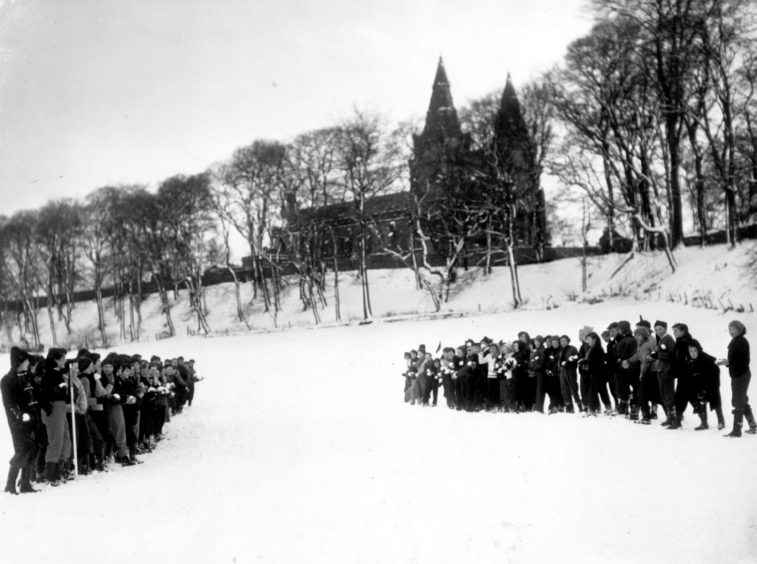Sitting by the banks of the River Don, Seaton Park is a precious green oasis loved by many in Aberdeen.
It offers a unique mix of history – such as the Bronze Age motte and mound, the Wallace Tower, relocated from the heart of the city, and views to the august St Machar’s Cathedral – as well as relaxation.
The Cathedral Walk offers a beautiful array of flower beds, while Mr Therm, a former steam engine brake van and railway wagons, has delighted generations of kids in the children’s play area.
Join us as we take a step back in time to put Seaton Park in the spotlight.

A view from 1960 looking across Seaton Park towards Seaton House. The house belonged to Major Hay of Seaton whose family lived there until 1956, even after the city bought the grounds to be converted to public parkland in 1947. The house was destroyed by fire in May 1963 and demolished in August the same year.

The last horse racing meeting took place in Aberdeen’s Seaton Park in September 1928. Prior to this racing had taken place regularly at the Links. It was then revived in Seaton Park in 1923 when 30,000 attended. Entrance to the paddock was 4/- (20p). The big race was the Bon Accord Handicap run over seven furlongs with a prize of 25 sovereigns. In 1956 an application to re-start horse racing at Seaton was turned down by the council.

An aerial picture showing Old Aberdeen, Seaton Park and St Machar’s Cathedral. The large tracts of undeveloped land suggest this picture was taken in the 1930s.

A general view taken from the top of Tilllydrone Mott, on which stood a fort in the 11th century, with St Machar Cathedral’s twin spires on the right, Seaton Park on the left. This atmospheric photo was taken in 1981.

Children line up for a snow ball fight at Seaton Park in the shadow of St Machar’s Cathedral in 1958, underlining the park’s role as somewhere for children to gather and to play.
